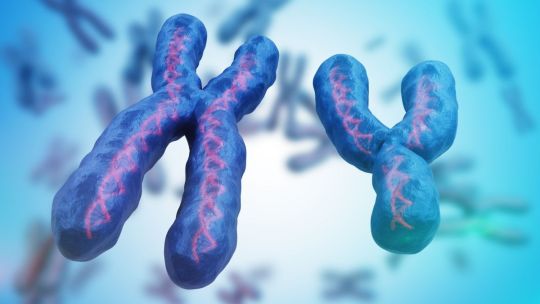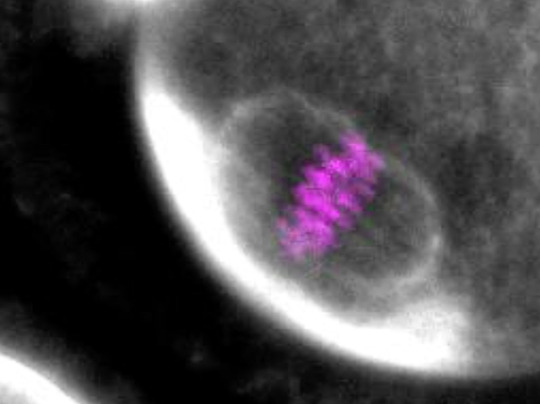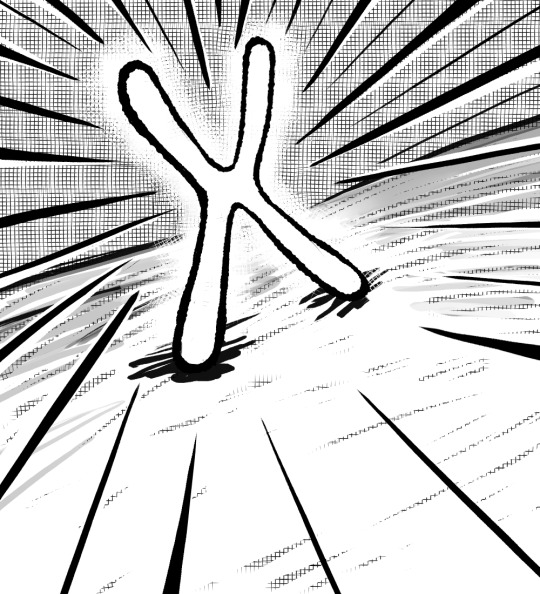#chromosome
Explore tagged Tumblr posts
Text
What’s going on with the Yokai watch fandom? Are they getting a reboot or something? This one cute yokai named Chromosome is all over my FYP on tik tok. He’s super cute the way he says “Oh my swirls!!!” With his country accent.
19 notes
·
View notes
Text
Deoxydal, the DNA Pokemon!
Type: Poison
Evolves from Vribozyme Evolves into Viram
Having slowly drawn energy from the activities of its RNA, Vribozymes will add more nucleic acids to themselves to become more efficient and advanced. Those that change their RNA nucleotides for DNA ones will evolve into Deoxydals, given enough time. Deoxydal's increased complexity makes them a much more considerable foe than their precursors.

#pokemon#fakemon#carbohs#natural history#paleontology#paleoblr#paleoart#evolution#DNA#chromosome#histidine#RNA#platonic solids
11 notes
·
View notes
Text









#yixing#exo#lay zhang#zhang yixing#exo-l#lay#exo lay#exo lay icons#cpop#kpop#smtown#chromosome#suho#baekhyun#chanyeol#kyungsoo#jongdae#kai#sehun#xiumin#xback#xingmi#cherries
29 notes
·
View notes
Text

Y chromosome. Photo.
Black and white photography.
#Y chromosome#Y#chromosome#photography#photo#photograph#picture#photos#photographs#image#black and white#blackandwhite#black and white photography
4 notes
·
View notes
Text


18 notes
·
View notes
Text

Actin Your Age
Loss of or impairment of a protein called F-actin in eggs of older females underlies the increased incidence of embryos with an abnormal chromosome number
Read the original article here
Still from video from work by Sam Dunkley and Binyam Mogessie
School of Biochemistry, University of Bristol, Bristol, UK
Image originally published with a Creative Commons Attribution 4.0 International (CC BY 4.0)
Published in Science Advances, January 2023
You can also follow BPoD on Instagram, Twitter and Facebook
#science#biomedicine#immunofluorescence#fertility#aneuploidy#eggs#embryos#chromosome abnormalities#chromosome#actin
9 notes
·
View notes
Text
MITOSIS- its Occurrence, Stages and Significance.
Unlocking knowledge one post at a time! Check out our latest notes on www.microscopiaiwm.com – a treasure trove of insights, ideas, and inspiration. Dive in, explore, and let the journey of discovery begin! 📚
INTRODUCTION: Mitosis is a type of cell division that takes place in living organisms and it is commonly defined as the process of duplication of chromosomes in eukaryotic cells and distributed during cell division. The process where a single cell divides resulting in two identical cells, each resulted cell contains the same number of chromosomes and…

View On WordPress
#anaphase#asexual reproduction#cell cycle#cell cycle stages#cell division#cell plate#chromosome#cleavage furrow#contractile ring#cytokinesis#daughter cell#daughter cells#division of cytoplasm#division of nucleus#dna#DNA double#duplication of chromosome#fragmoplast#genetics#germ cells#homologous chromosome#homologous recombination#homologous recombination repair#karyokinesis#kinetochore#kinetoplast#meiosis#metaphase#MicroScopia IWM#mitos
5 notes
·
View notes
Text
silly edit in anatomy/physiology video
Put sound on!! (please, that's like the whole joke...)
Was looking at stuff for my Anatomy, Fysiology and Pathology class and this edit just sends me. I had to share. You get used to the guy talking and explaining then suddenly...!! This is the first of this kind of edit in the video too, it comes so unexpected.
OG video: https://www.youtube.com/watch?v=izOa3-AX8zQ
@venterry Hi! You know, funny coincidence, when I went to share this silly video editing choice the first thing I saw was your reblog of another wacky edit, so... I thought maybe you'd appreciate this too. Sorry if you don't like to be mentioned I just thought you might like it and the coincidence was too strong to resist...
4 notes
·
View notes
Text

*VARIABLE X*
artfight friendly fire for my twinnie (metaphysics on af) of her bizarre character created during middle school
#digital art#drawing#chromosome#yes its a chromosome#that shoots algebra symbols#illustration#black and white#monochrome#artfight
2 notes
·
View notes
Text
Why Do Cells Age and Die 2025

Why Do Cells Age and Die 2025
Cells—the basic units of life—do not live forever. Like all living things, they have a natural life cycle: they grow, perform functions, divide, and eventually die. But why does this happen? Why can’t a cell just keep going endlessly? In 2025, thanks to major breakthroughs in cell biology, genetics, and aging science, we now have a clearer understanding of the cellular aging and death process than ever before. Let’s explore what makes cells age, why they eventually die, and how this ties into larger systems like aging, disease, and life expectancy. Book-Level Explanation Cells age and die due to both internal mechanisms and external factors. There are two main biological processes that drive this: 1. Cellular Senescence Cellular senescence refers to a permanent state where cells stop dividing but remain metabolically active. It’s usually triggered by DNA damage, oxidative stress, or the shortening of telomeres (protective ends of chromosomes). Senescent cells don’t die immediately, but they lose their ability to function normally and may release inflammatory signals that can harm neighboring cells. 2. Programmed Cell Death (Apoptosis) Apoptosis is a highly regulated and natural form of cell death. It plays a vital role in development, immune response, and tissue homeostasis. When a cell is damaged beyond repair, or if it’s no longer needed (such as after an infection is cleared), it undergoes apoptosis to safely dismantle and remove itself. Other factors also play key roles: - Telomere shortening: Telomeres act like protective caps at the end of chromosomes. With every division, they get shorter. When they become too short, the cell can no longer divide. - DNA damage: Radiation, toxins, and errors in replication can damage DNA. If the damage is too extensive, it can trigger senescence or apoptosis. - Mitochondrial dysfunction: As cells age, mitochondria (energy-producing organelles) become less efficient and produce more reactive oxygen species (ROS), which damage cellular components. These mechanisms are essential for the survival of organisms. They prevent the spread of damaged or potentially cancerous cells and help renew tissues. Easy Explanation Think of a cell like a little worker in your body. It has a job to do—maybe it builds things, cleans waste, or helps protect you from germs. But even the hardest worker gets tired over time. That’s basically what happens with cells. Every time a cell divides, it makes a copy of itself. But with each copy, its "shoelace tips" (called telomeres) get shorter. When those tips are too worn out, the cell can’t divide anymore. It’s like trying to tie your shoes with frayed laces—it just doesn’t work. Some cells also get sick from stress, like too much sun, pollution, or chemicals. When they’re damaged beyond repair, they self-destruct through a process called apoptosis. This is the body’s way of recycling broken or dangerous cells so new, healthy ones can take their place. Sometimes, a cell doesn’t die right away but goes into “retirement” mode. It’s still alive but not really working anymore. These retired cells are called senescent cells. If too many build up, they can actually cause inflammation and problems in your body. So, cells age and die to keep your body clean, efficient, and healthy. If they didn’t, damaged cells could cause serious issues like cancer.




Why This Matters in 2025 In the last few years, scientists have made major progress in understanding and even reversing some parts of the aging process. Some highlights: - Researchers have identified compounds called senolytics that can selectively remove senescent cells from tissues. Early trials show these might help reduce age-related inflammation and improve health span. - CRISPR and other gene-editing tools are being used to investigate telomere extension and DNA repair. - Studies in model organisms have shown that controlling mitochondrial health can slow down cellular aging. There’s even speculation that cellular rejuvenation techniques could one day delay aging and age-related diseases in humans. Real-World Impact The way cells age and die affects everything from your skin wrinkling to the development of Alzheimer’s, cancer, and heart disease. It also plays a role in immune system decline, making older adults more vulnerable to infections. By better understanding this process, researchers can: - Develop anti-aging therapies - Create more effective cancer treatments - Improve regenerative medicine (e.g., using stem cells) - Enhance organ transplant outcomes This field is central to the future of personalized and preventative medicine.
Conclusion
Cells age and die because it’s part of nature’s way of maintaining balance. While it might seem like a flaw, it’s actually a protective system that helps your body stay healthy. In 2025, scientists are closer than ever to unraveling the secrets of cellular aging—and perhaps even learning how to slow it down. External Link for Further Reading: Learn more about cell aging and programmed death on Wikipedia: https://en.wikipedia.org/wiki/Cell_senescence Our Blogs You Might Like What If Human Consciousness Could Be Uploaded Into Light 2025 https://edgythoughts.com/what-if-human-consciousness-could-be-uploaded-into-light-2025 How Do Gut Bacteria Shape the Brain 2025 https://edgythoughts.com/how-do-gut-bacteria-shape-the-brain-2025 Disclaimer: The easy explanation is designed to help readers of all backgrounds understand complex scientific concepts. If you're a student, always follow your school's guidelines and refer to your textbooks or academic materials when preparing for exams or assignments. We're here to support your learning—not replace your curriculum. Read the full article
#20250101t0000000000000#20250420t0000000000000#2025httpsedgythoughtscomhowdogutbacteriashapethebrain2025disclaimerthe#2025httpsedgythoughtscomwhatifhumanconsciousnesscouldbeuploadedintolight2025how#ageing#agingassociateddiseases#alzheimer'sdisease#apoptosis#bacteria#biologicallifecycle#biologicalprocess#biology#cancer#cancertreatment#cardiovasculardisease#cell(biology)#celldivision#cellsignaling#cellularcomponent#cellularsenescence#chemicalsubstance#chromosome#consciousness#crispr#curriculum#disease#dnadamagenaturallyoccurring#dnarepair#dnareplication#explanation
0 notes
Text
SciTech Chronicles. . . . . . . . .Mar 24th, 2025
#genes#chromosome#hippocampus#myelin#Aardvark#multimodal#GFS#democratising#cognitive#assessment#Human-AI#Collaboration#E2A#192Tbit/s#Alcatel#2028#genomics#bioinformatics#antimicrobial
0 notes
Text
Study reveals how silent X chromosome enhances female brain resilience
In a surprise, work in mice has found that the dormant X chromosome in females can reawaken late in life and turn on genes that keep the brain healthy. UCSF researchers may have discovered how the female brain remains resilient in aging, answering an age-old question of how most women outlive men and retain their cognitive abilities longer. Females carry two X chromosomes. One of them is…

View On WordPress
0 notes
Text
Maternal X Chromosome Linked to Faster Cognitive Decline
Women inherit two X chromosomes, one from each parent. However, only one X chromosome functions in each cell. The other is inactivated. But recent research shows that when the X chromosome is expressed only from the mother, cognitive decline accelerates. UC San Francisco researchers uncovered this critical link in a study published in Nature. This discovery might explain why some women…
0 notes
Text
Maternal X Chromosome Linked to Faster Cognitive Decline
Women inherit two X chromosomes, one from each parent. However, only one X chromosome functions in each cell. The other is inactivated. But recent research shows that when the X chromosome is expressed only from the mother, cognitive decline accelerates. UC San Francisco researchers uncovered this critical link in a study published in Nature. This discovery might explain why some women…
0 notes
